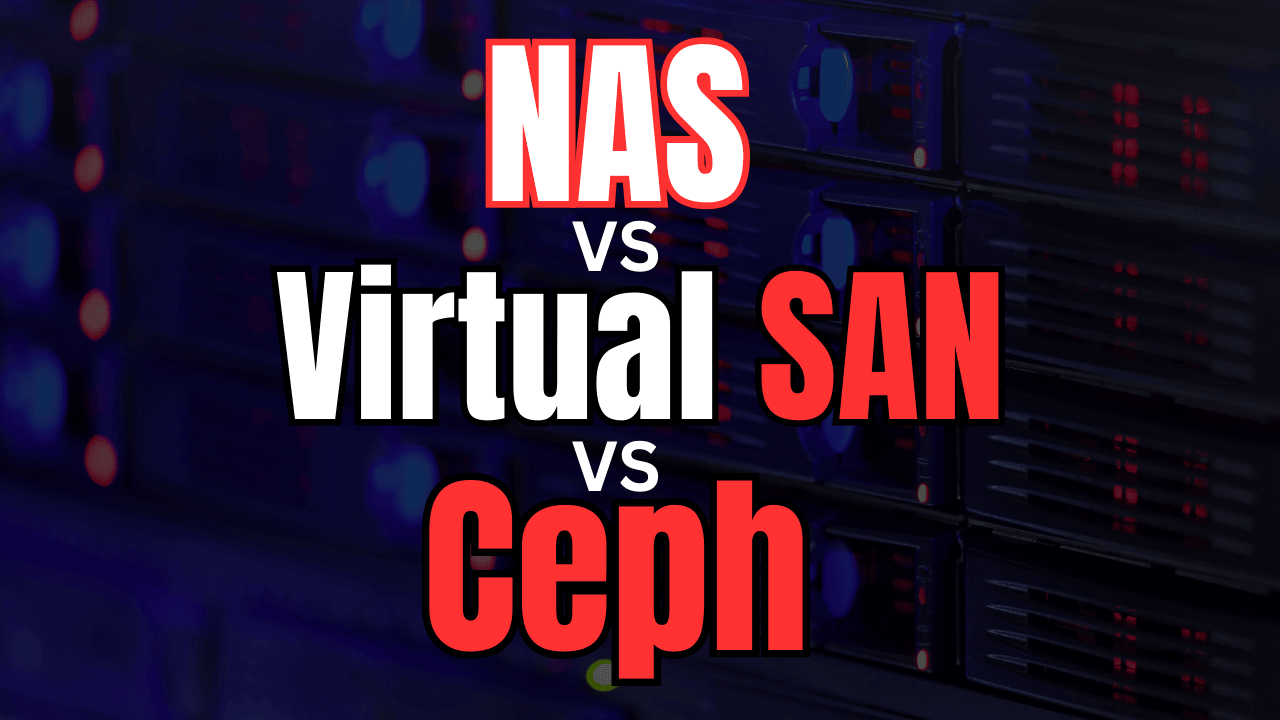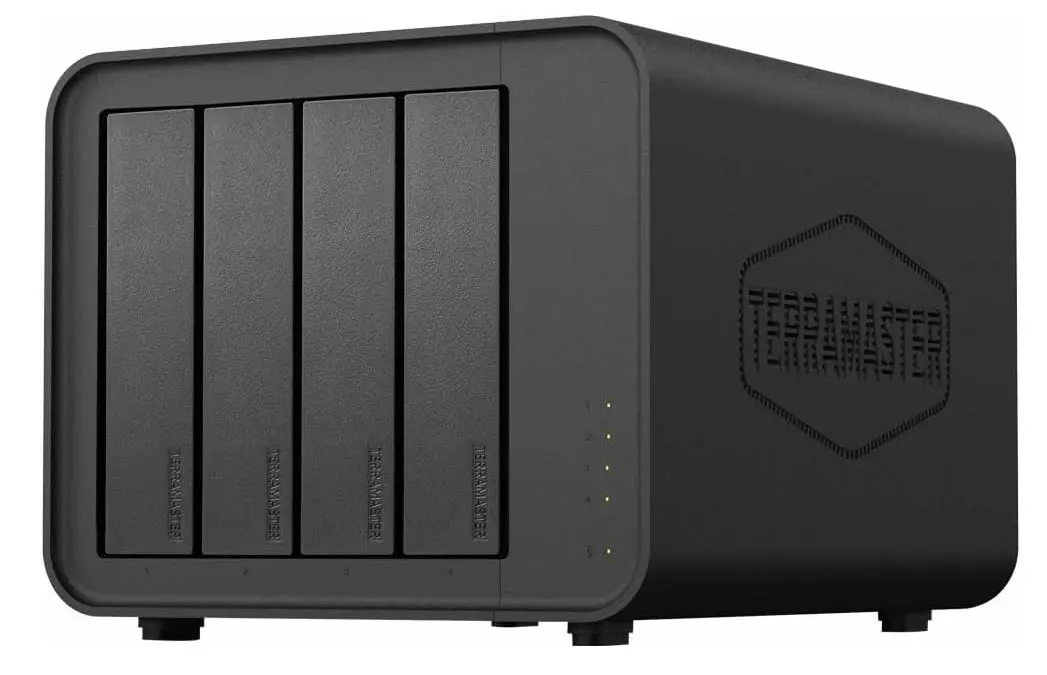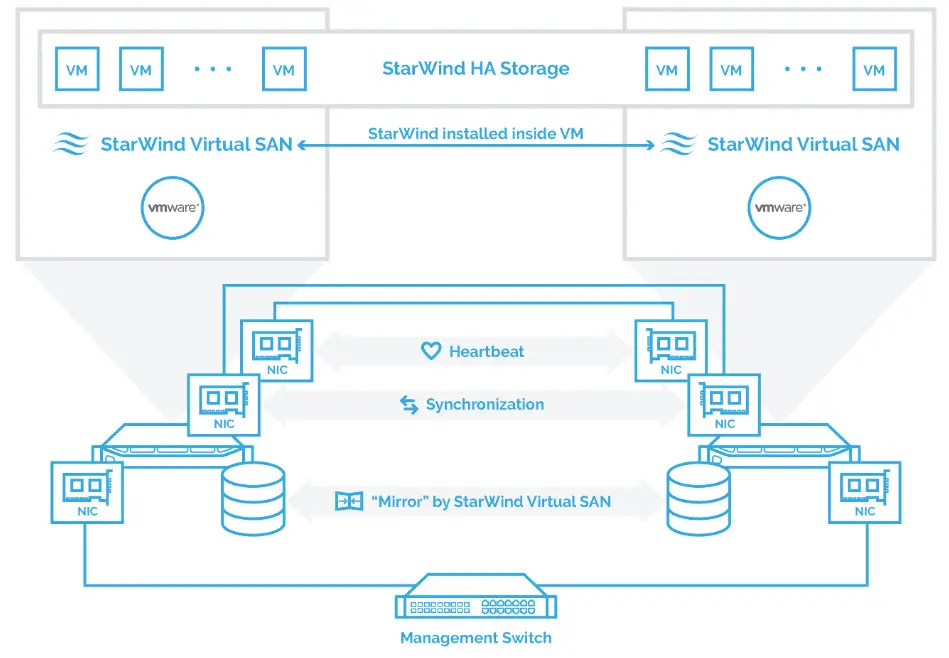One of the critical design decisions that you have with a home lab is storage. There are many great options available. And, depending on a few things, like which hypervisor you use, you can choose from a wide range of technologies. Let’s take a look at three storage technologies: NAS vs Virtual SAN vs Ceph and see what the pros and cons are for each, and why you might choose one over the other.
Three of the top options for storage:
Let’s start by defining the three main contenders:
- NAS (Network-Attached Storage) – Modern NAS devices are a true hyperconverged appliance. They contain compute, storage, and networking all in the same package. They are ideal for storage using things like SMB, NFS, or iSCSI targets. You can storage anything from files, backups, media files, and run even VMs and containers on your NAS.
- Virtual SAN (Software-Defined Storage) – Virtual SANs create logical storage across multiple hosts using local storage attached to those hosts. VMware vSAN is arguably the Cadillac solution in this space, but there are others out there like StarWind Virtual SAN.
- Ceph – Ceph is a type of virtual SAN that provides distributed storage system. It is designed for high scalability and fault tolerance. With Ceph storage, it supports block, file, and object storage. It can be used for things like Kubernetes or Proxmox. Ceph replicates data in such a way that it is resilient to failures, and it heals itself. It also is known for a steep learning curve and also has certain hardware requirements to be met.
NAS is still a great option for home labs in 2025 and beyond
First of all, NAS devices are self-contained storage devices that are generally ready to go. They are plug and play and depending on the NAS and NAS operating system, they work out of the box with just about any hypervisor and operating system you want to use them with.
Brands I have experience with are Synology, TerraMaster, and UGREEN. All of these offer compact boxes with great UIs, app stores, snapshotting, and they allow you to have scheduled backups. You can also run Docker containers and virtual machines directly on the NAS itself.
However, it is important to note, that in 2025, Synology has come under scrutiny for pushing users into branded drives and locking down certain features to work with only those Synology branded drives. Even though it has great software and security, this is a bummer. Check out my blog on this topic here:
For this reason among others, many home labbers are using platforms like TrueNAS SCALE on top of their own hardware build outs. Other great options appear to be coming out, like the Minisforum N5 Pro NAS that provides the hardware to use with TrueNAS.
NAS devices have their limits though. They can be constrained by their CPU and RAM as well as the types of disks they contain. NAS devices that only have spindles, may not be very performant when running virtual machines. And while many support 10GbE networking you are generally still bottlenecked by networking. Units with (2) 10 gig connections will help if these can be bonded together.
There are some units like the Terramaster F8 SSD Plus that are all flash. I currently run one of these in my home lab and the performance is really great. I have 20-30 VMs running on this NAS without any issues.
Virtual SAN
I think Virtual SAN technologies are great. I was a big fan of VMware vSAN. However, Broadcom has really made vSAN a difficult decision for most customers due to the license changes now charging for the amount of storage.
It is amazing to see how a turn of events in the industry like this can dampen the enthusiasm for a particular type of technology. We all know VMware is not the only solution for Virtual SAN, but they are the big player in this market and since they at least had the lion’s share of virtualization customers on-premises, vSAN became very popular.
Now though I think many are looking more at traditional storage, if they are still a VMware customer, due to the licensing costs. However these changes aside, Virtual SANs shine in what they can do and how they can reduce complexity by having your storage as part of your compute nodes.
They pool drives together inside your servers and eliminate the need for an external NAS, but still have the advantages of shared storage for virtualization clusters.
StarWind has a Virtual SAN solution that has a true two-node configuration that can operate with full redundancy for your data. Outside of StarWind and VMware vSAN two-node (which still requires a witness node), most Virtual SAN solutions require a minimum of three nodes to make sure your data is redundant.
Software defined storage solutions are also VERY sensitive to and dependent on the network. You need to make sure of things like optimizing MTU, jumbo frames, caching policies, or using SSD metadata devices. But once the requirements are met and the configuration is properly set up, virtual SANs provide a great blend of performance and redundancy.
Ceph
Ceph storage in itself is a type of software-defined storage like the Virtual SAN we have already mentioned. It is also similar to something like vSAN. It can be used in all types of environments, including for hyperscalers, all the way down to home labs by means of using MicroCeph and Rook.
Ceph can do multiple types of storage, including RDB (block), CephFS which is a file-based storage, and RGW which is S3-compatible object storage. This gives you a ton of options depending on your use case. You can host VM disks, have Kubernetes disks that use persistent volumes with block or file storage, and you can use it to run your object storage service also.
Ceph gives you three types of storage: RBD (block), CephFS (file), and RGW (S3-compatible object storage). This flexibility makes it ideal for hybrid use cases—hosting VM disks, backing Kubernetes persistent volumes, or running your own object storage service.
That said, full-blown Ceph storage configuration and management is not for the faint of heart. While Microceph abstracts away a lot of the complexity, traditional Ceph still requires you know concepts like:
- CRUSH maps
- OSDs
- MONs
- MDSs
- Pools
Ceph itself also requires a good bit of resources. The OSD daemon for Ceph uses about 4GB of RAM, and journal devices perform the best when these are housed on dedicated SSDs. Ceph setups like for Proxmox or if you are running Kubernetes need to have 3+ nodes and 10GbE networking. Less networking or other resources will result in poor performance.
Take a look at my video walkthrough of installing and configuring Ceph in Proxmox:
Comparing Storage Types Side by Side
Here’s how NAS, Virtual SAN, and Ceph stack up in a home lab context:
| Feature | NAS | Virtual SAN | Ceph |
|---|---|---|---|
| Complexity | Low | Medium to high (depends on the solution) | High |
| Node Requirement | 1 | 3+ | 3+ recommended |
| Performance | Moderate (SSD/10GbE NAS) | High (local NVMe/replicas) | High (with tuning) |
| Redundancy | RAID | Replication across nodes | Native self-healing |
| Best For | Backups, media, Docker | VM clusters, HA services | Kubernetes, scale-out storage |
| Growth Potential | Low to Medium | Medium | Very High |
| Learning Curve | Minimal | Moderate | Steep |
| Protocols | SMB, NFS, iSCSI | iSCSI, NFS, ZFS | RBD, CephFS, S3 |
Which option makes the most sense?
I think any of the options we have talked about and discussed here would make for good options for home lab storage. However, it depends on your experience level and how simple or complex you would like your storage infrastructure to be.
Most I think will benefit by starting their journey for home lab storage using a NAS. NAS storage is simple, reliable, and it provides a wide range of capabilities for providing different types of storage in your environment.
Virtual SAN solutions are for more experienced users in a home lab environment who maybe have multiple nodes already running local storage. There are many different Virtual SAN solutions available to try sot his is definitely worth experimenting with and is great for learning.
Especially if you are running Proxmox, Ceph makes a lot of sense. In Proxmox it is built into the solution so that Proxmox steps you through the configuration which helps make this part of the process much easier. But keep in mind you can use it for more than just Proxmox. It can back storage for containers as well as Kubernetes as well.
That said, many labs end up using all three:
- A NAS for backups and cold storage
- A Virtual SAN for VM workloads
- Ceph for S3 or Kubernetes volumes
This, I think, is the beauty of home lab environments as you can mix and match the storage types you need in your lab environment and benefit from all different types to satisfy your use cases.
Wrapping up
Storage technologies are evolving quickly. There are so many different types of storage solutions with various pros and cons for each. Running a NAS is a great way to get into having the ability to run shared storage for all devices in your network or as a target for virtualization hosts. Virtual SANs are a great way to extend the power of your virtualization hosts and minimize the number of hardware devices running just for storage as the hosts themselves contribute storage to the cluster. Ceph is a special distributed storage solution that is extremely popular with Proxmox and in the open-source world. I have been using it for backing storage in my Docker Swarm and Kubernetes clusters and it works great.
Let me know what types of storage you are using in your home lab environment and any limitations you have discovered or want to share.
Google is updating how articles are shown. Don’t miss our leading home lab and tech content, written by humans, by setting Virtualization Howto as a preferred source.







